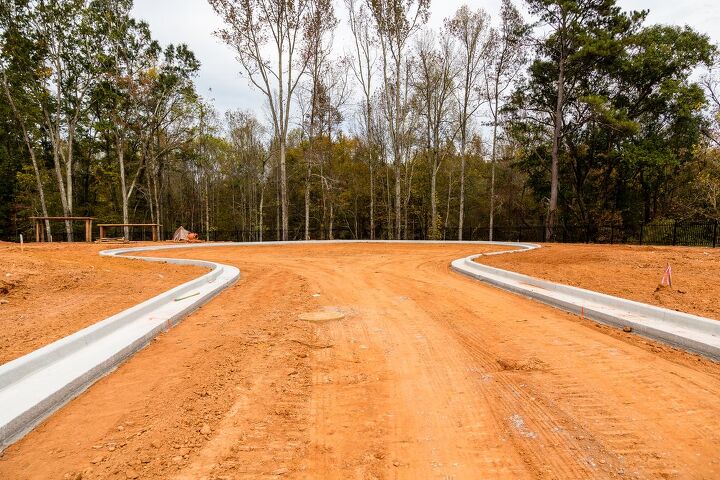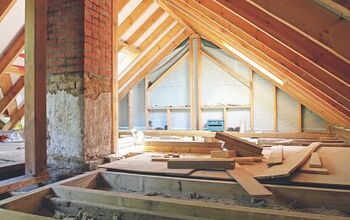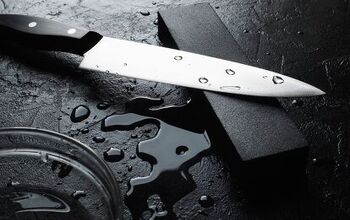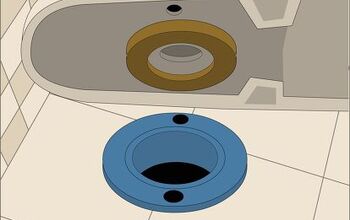6 Types Of Concrete Curbs (With Photos)

It is easy to put concrete curbs out of your mind because of how commonplace they are in daily life. Whether you walk over concrete curbs every day or you simply drive alongside them, they’re a bigger part of your life than they may seem. With all of the functionality and benefits of concrete curbs, how many types are there?
Straight, rolling, integral, and sloped curbs are the most common concrete curbs. Mower curbs are common in neighborhoods or yards with flower beds. Decorative concrete curbs often surround flower beds, but you can find them in residential neighborhoods.
Concrete curbs both protect pedestrians and provide a safe path for cars to navigate. You can avoid dangerous car accidents and protect your lawn or flower beds with concrete curbs. Follow along as we explore the types of concrete curbs and see how they differ.
Do You Need Concrete, Brick, or Stone Pros?
Get free, zero-commitment quotes from pro contractors near you.

Concrete Curb Types
1. Mower
Mower curbs are common in parks, neighborhoods, and places with frequent lawn maintenance. They are designed specifically so that you can drive a mower over them and into a lawn without causing damage. It is possible to drive a mower with one wheel on a mower curb and another wheel in the grass.
That makes mower curbs that perfect style for properties near large lots or multiple flower beds. They are sloped so that the top edge can prevent the mower from damaging grass and flowers. The lower edge on a mower curb is flatter and smooth enough to accommodate wheels.
2. Straight
Straight concrete curbs are often referred to as barrier curbs because of their design. They effectively create a barrier that can prevent tires from riding up on the curb. Straight curbs are also useful because they protect pedestrians along the side of the road.
They are designed specifically so that pedestrians can walk over them without catching their feet and tripping. It helps that straight concrete curbs dissuade cars from driving on them, but they won’t damage tires. Granted, you can damage your tires and undercarriage if you drive over a straight concrete curb, so it is inadvisable.
3. Rolling
Rolling curbs get their name from the fact that you can easily roll your tires over them. You can find rolling curbs in apartment communities and neighborhoods. The slant in a rolling curb also allows water to easily roll down which helps mitigate pooling water.
There is a small indentation between the street and the sidewalk which can handle a tire without causing damage. It’s not a great idea to roll your tires over curbs of any kind, but rolling curbs at least won’t cause major damage. Rolling curbs are often found between driveways and the street whether they are uphill or downhill.
4. Sloped
Sloped curbs have limited functionality, but they are visually appealing and are the most unique variety. It is a way to compliment your driveway or sidewalk leading up to your home without creating an obstacle. Sloped curbs aren’t ideal for mowers or for rolling over, but they have a distinct style.
It is common to find sloped concrete curbs surrounding landscaping, but they are great for driveways as well. Sloped curbs compliment flower beds and can help redirect water towards soil if you place them well. A sloped curb is not the most functional option but it has more visual flair than rolling or straight concrete curbs.
5. Integral
Integral, or monolithic concrete curbs, serve the purpose of protecting the roads. You generally find integral concrete curbs on asphalt roads that have frequent traffic and heavy trucks. Monolithic concrete curbs stand tall enough to protect the road from heavy loads and large truck tires.
Integral curbs can withstand water damage, and their design protects them from standing water erosion. Monolithic sidewalks are common in big, popular cities where you’ll find raised sidewalks and curbs that are flush with one another.
6. Decorative
Decorative curbs are generally in the style of mower and rolling curbs. The main difference is that decorative curbs can look any way that you choose and still retain function. They aren’t as ideal for residential roads and driveways, but decorative curbs are perfect for flower beds.
Some gated communities and small neighborhoods have decorative curbs that draw eyes. It is common to paint the flat edge a different color from the sloped edge to create a contrast with decorative concrete curbs. It is more expensive to repaint, repair, and patch cracks in decorative curbs than standard concrete curbs.
Benefits
Concrete curbs exist solely for practical purposes and their benefits are quite important. Whether you see a curb on the road, in your neighborhood, or in your backyard; concrete curbs carry numerous benefits.
Safety
The road is where concrete curb benefits are the most obvious. Curbs serve as a barrier between the road and the sidewalk that protects your car as well as the sidewalk. A straight, or barrier, concrete curb directly prevents cars from riding up on the sidewalk leading to awful accidents.
This is a lifesaver and regularly prevents traffic fatalities for drivers and pedestrians alike. Pedestrians benefit from concrete curbs because they are easy to spot and divide the sidewalk from the road. This comes in handy out on city streets or in residential neighborhoods.
Lawn Care
Lawn care comes down to more than simply mowing your lawn and making sure it gets enough water. Decorative curbs and mower curbs provide ample lawn protection and allow you to maintain your yard. Flower beds often have a curb of some sort to allow you to trim the grass that borders them.
Mower curbs especially are useful because they allow push and riding mowers to access every bit of grass. The only difference is that mower curbs are sloped to where you can position one wheel on the curb at a time. This prevents over-mowing and damaging the flowers or the curb itself during lawn maintenance.
Curbs also often prevent weeds and invasive grasses from entering your flower beds. That means that you can use curbs as a way to minimize weed growth and allow your foliage to flourish.
Related Questions
Do concrete curbs need rebar?
You can reinforce concrete curbs with rebar, but it is often unnecessary. Use proper jointing so that you don’t need to install rebar to fortify your concrete curbs. Place the rebar in the concrete curb form before you install them so that the rebar is even and stays in place.
Are sloped curbs better?
Sloped curbs are better if you live somewhere with frequent rain and flooding. The sloped shape can help direct water away from the street and soil to prevent flooding. It is also safer for cars because sloped curbs are unlikely to damage tires or your car’s undercarriage.
How long does concrete edging last?
Concrete edging lasts for an average of 20 years. You can patch and repair concrete edging and curbs before that time. It costs an average of $2.50 per square foot in materials to repair and patch concrete edging.
How much does concrete curbing cost?
It costs an average of $3,200 to install a concrete curb. Private concrete curbing for yards and driveways generally costs $6 per linear foot in material and installation costs. You will spend another $25 per linear foot on labor when you hire a contractor to install a concrete curb.
Do You Need Concrete, Brick, or Stone Pros?
Get free, zero-commitment quotes from pro contractors near you.

Summing It Up
Straight, rolling, and sloped concrete curbs protect cars and pedestrians. You find straight concrete curbs on city streets and in neighborhoods, and cars cannot drive on them. Rolling concrete curbs are safe to drive over, and they are often found between driveways and streets.
Decorative concrete curbs are more commonly found around landscaping to protect grass and flower beds. They can also prevent weeds from infiltrating your yard and flower beds, but they are expensive. Mower curbs are effective because they allow for mowers to drive over the curb and mow the grass that borders it.
Concrete curbs protect cars from undercarriage and tire damage. They also prevent pedestrians from tripping and falling or stepping into the street. Rolling curbs are the most practical and useful because they protect cars and pedestrians, and they are safe to drive over.
Related Articles

Nick Durante is a professional writer with a primary focus on home improvement. When he is not writing about home improvement or taking on projects around the house, he likes to read and create art. He is always looking towards the newest trends in home improvement.
More by Nick Durante































